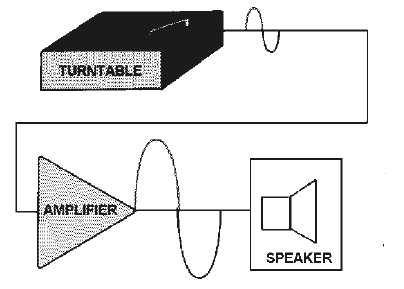1-2
Perhaps the concept of the relationship of amplifier-amplification-amplitude will be clearer if you
consider a parallel situation (an analogy). A magnifying glass is a magnifier. As such, it provides
magnification which is an increase in the magnitude (size) of an object. This relationship of magnifier-
magnification-magnitude is the same as the relationship of amplifier-amplification-amplitude. The
analogy is true in one other aspect as well. The magnifier does not change the object that is being
magnified; it is only the image that is larger, not the object itself. With the amplifier, the output signal
differs in amplitude from the input signal, but the input signal still exists unchanged. So, the object (input
signal) and the magnifier (amplifier) control the image (output signal).
An amplifier can be defined as a device that enables an input signal to control an output signal. The
output signal will have some (or all) of the characteristics of the input signal but will generally be larger
than the input signal in terms of voltage, current, or power.
USES OF AMPLIFICATION
Most electronic devices use amplifiers to provide various amounts of signal amplification. Since
most signals are originally too small to control or drive the desired device, some amplification is needed.
For example, the audio signal taken from a record is too small to drive a speaker, so amplification is
needed. The signal will be amplified several times between the needle of the record player and the
speaker. Each time the signal is amplified it is said to go through a STAGE of amplification. The audio
amplifier shown connected between the turntable and speaker system in figure 1-1 contains several stages
of amplification.
Figure 1-1.—Amplifier as used with turntable and speaker.
Notice the triangle used in figure 1-1 to represent the amplifier. This triangle is the standard block
diagram symbol for an amplifier.
Another example of the use of an amplifier is shown in figure 1-2. In a radio receiver, the signal
picked up by the antenna is too weak (small) to be used as it is. This signal must be amplified before it is
sent to the detector. (The detector separates the audio signal from the frequency that was sent by the
transmitter. The way in which this is done will be discussed later in this training series.)

